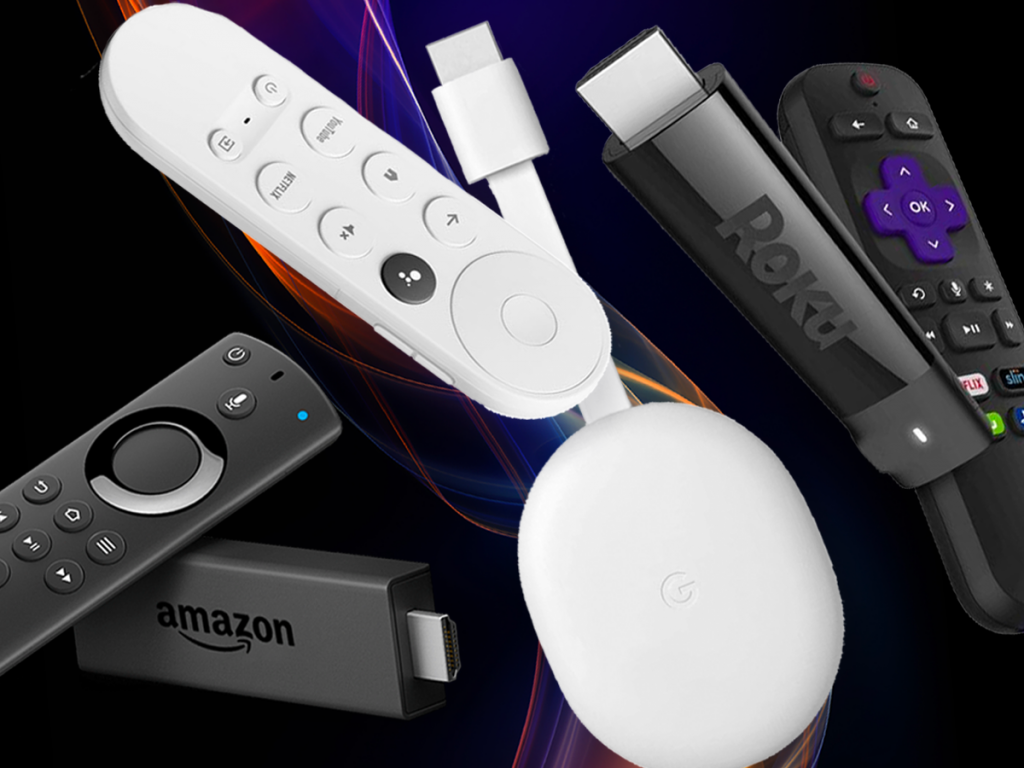Seeing Connected TV Through a Search Marketer Lens
by Jaci Schreckengost
3 Min Read
CES 2024: Stagwell (STGW) and MNTN Announce Partnership in Unified Performance SolutionsLearn More
The introduction of Google’s revamped CTV platform for its Chromecast brings the fight to Amazon and Roku

4 Min Read
The launch of Google TV has shaken up the Connected TV device marketplace. The slick new CTV platform, available on Chromecast, brings a variety of new features to Google’s CTV device, acting as a convenient hub for streaming TV viewers to access their favorite content—much like Roku and Amazon’s Fire TV Stick.
If you follow the CTV space at all, you’re very well aware of Roku (and to a lesser extent, Amazon’s) dominance of the device market. Research firm eMarketer estimates that Roku users make up nearly 33% of US internet users, and 46.9% of CTV users in 2020. Amazon comes in 2nd place, edging out game consoles. Both Roku and Amazon have created successful ecosystems on their CTV devices, making it convenient for streamers to turn them on and access their programming. Thanks to a user experience on par with its rivals, it’s nearly certain Google TV will lead to Chromecast gaining more market share.
But more importantly for marketers, Google TV’s introduction will lead to a CTV advertising arms race between the three major device competitors—and that’s good news for advertisers.
CTV advertising is thriving, with revenue expectations well north of $10B by 2021. And with the rapid adoption of CTV in the face of COVID-19 (81% rise in viewing time year over year), that number can be expected to surge even higher.
2020 has seen CTV advertising grow by leaps and bounds. A report by Business Insider found that the value of CTV ads surged 205% YoY in the first half of the year. A bulk of that belonged to Hulu and Amazon Prime Video—proving that Amazon’s fledgling streaming advertising business is off to a good start. Roku has also seen success, with its ad business challenging its device sales for revenue.
This is all to say that CTV advertising is looking more and more lucrative to major players. That means they’ll be looking for new ways to compete for advertisers’ dollars—new formats, incentives, and better user experiences to lure valuable viewers in.
When it comes down to advertising, you have to give the nod to Google.
Roku, at its core, is a device company. Amazon, meanwhile, is primarily an ecommerce brand. And while both have up-and-coming ad businesses, Google’s core competency is advertising—they’ve mastered that market and are awash in data, and know how to make said data actionable.
With that in mind, Google TV’s ad ecosystem is looking good so far. They’ve worked a Google search bar into their UI, allowing viewers to google from their TV. The symbiotic relationship between Google TV and ad-supported YouTube TV is also looking to be beneficial (Google is currently offering a free Chromecast with any YouTube TV subscription, so expect more of that in the future).
With Google being Google, you can also expect some ad innovation as well. They’re currently piloting some direct-response ads for CTV (which we’ve already been running with great success) that taps into the direct ecommerce advantages of CTV. It’s a safe bet to say we’ll see more innovation from Google in this arena than Roku and Amazon—which could result in them playing a game of catch-up of their own.
We’ve seen Roku and Amazon block certain CTV apps from their devices—HBO Max being the biggest example—because it benefits them from a business sense. Of course, it’s not too convenient for viewers. But with Google TV’s unveiling, we may very well see that exclusion practice start to change.
More competition in the device marketplace means more apps becoming available on other devices. For example, if Google TV starts to include apps that are in demand but unavailable elsewhere, that could be enough for them to choose it over another option. And that won’t sit well with the likes of Roku.
More apps finding homes on the most popular streaming devices is good news for advertisers. The vast majority of these CTV apps are ad-supported, and if device makers are more inclined to offer more variety, this makes streaming viewers easier to reach for advertisers and unlocks new inventory opportunities.
More viable device options is not only good for streaming viewers, it’s good for advertisers as well. And despite Google’s current market share disadvantage, you have to tip them as favorites for being a force in CTV advertising. That said we’re still pretty early in the game, and who knows if Roku or Amazon have a few more tricks up their sleeves to deal with Google TV. What’s certain is that as these major players begin to compete for more ad dollars, it will only benefit advertisers.
If you’re interested in learning more about CTV advertising, talk to us. MNTN Performance TV gets your ads across top-tier streaming networks, whether it’s streaming on Chromecast, Roku, or Amazon Fire TV sticks.
Subscribe to the report Apple, Amazon, NBC and more use to get their CTV news.
MNTN uses cookies to deliver a great user experience on and off of our website. By continuing to browse our site, you agree to our use of cookies.